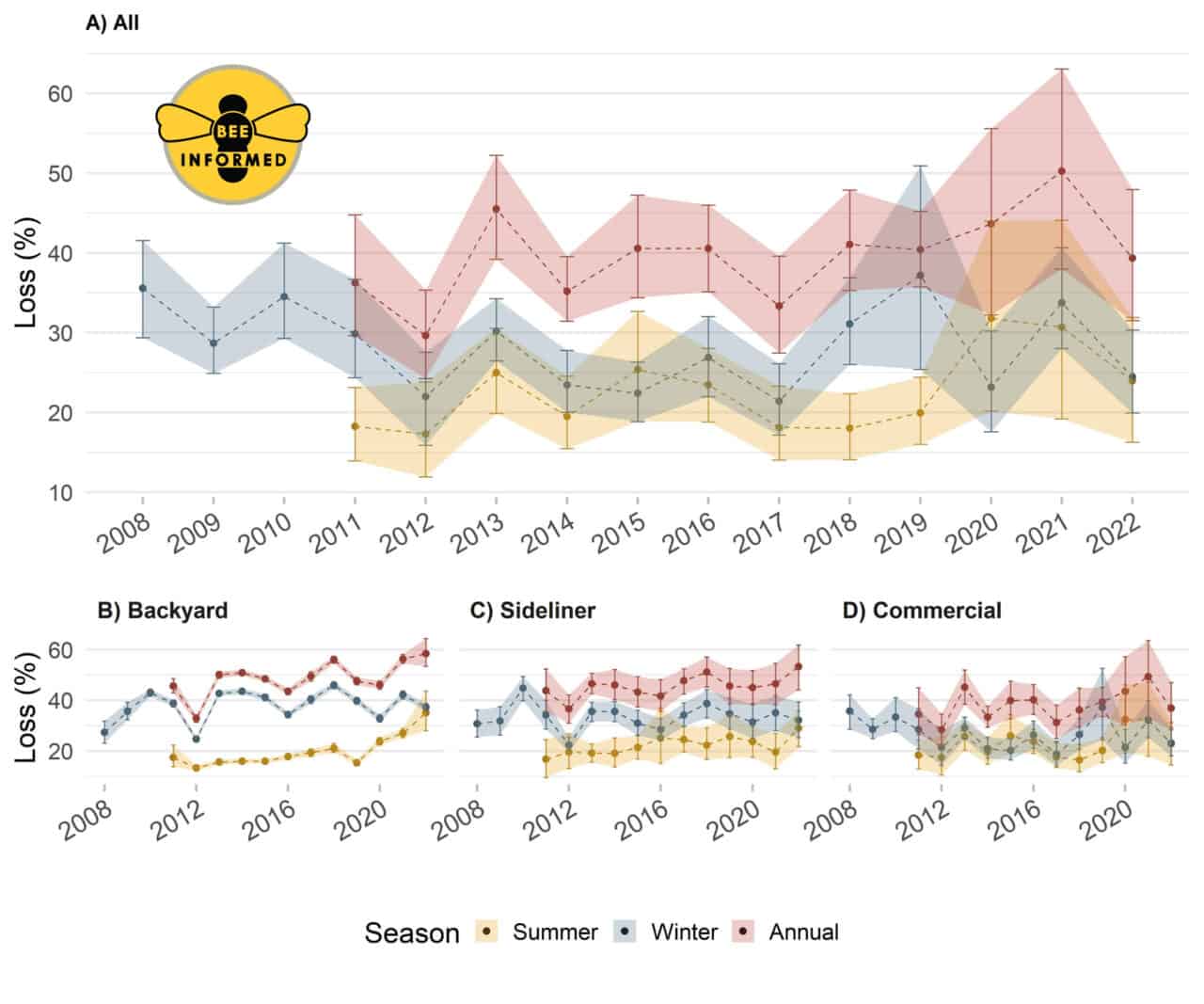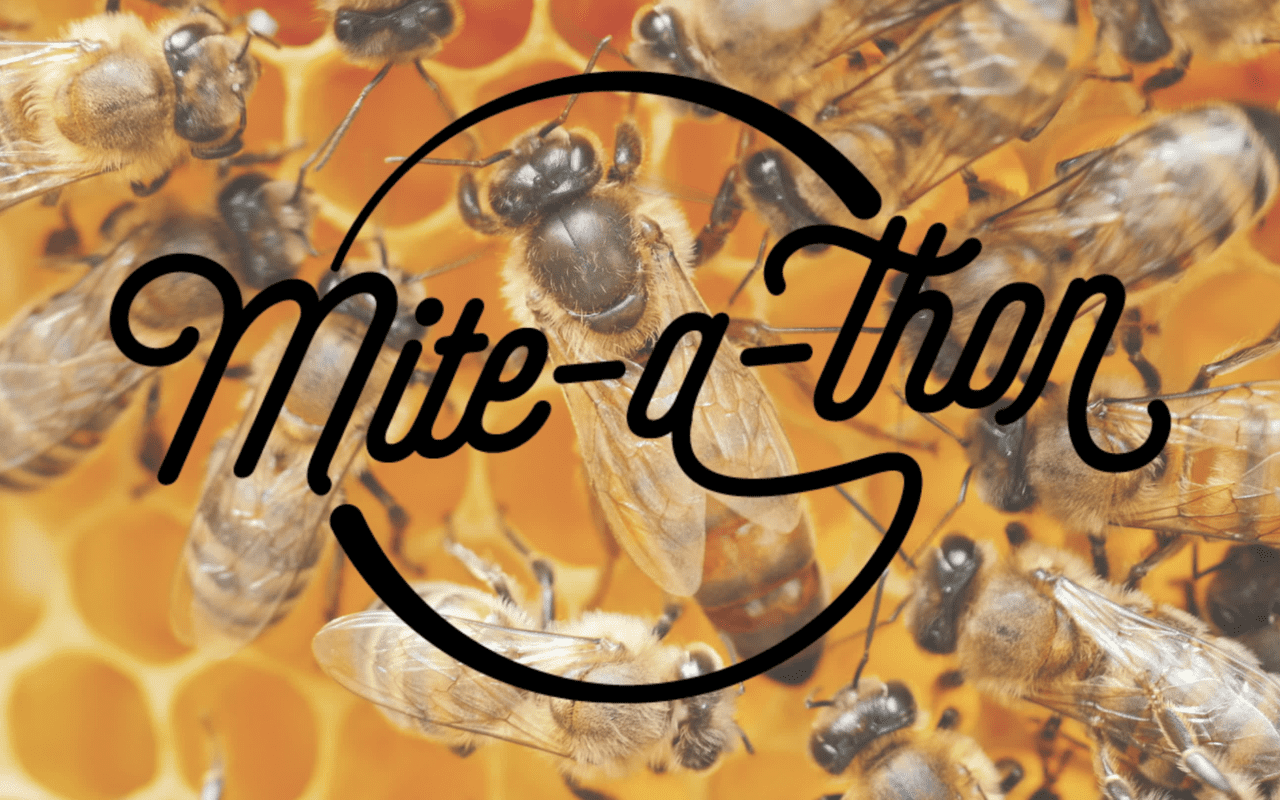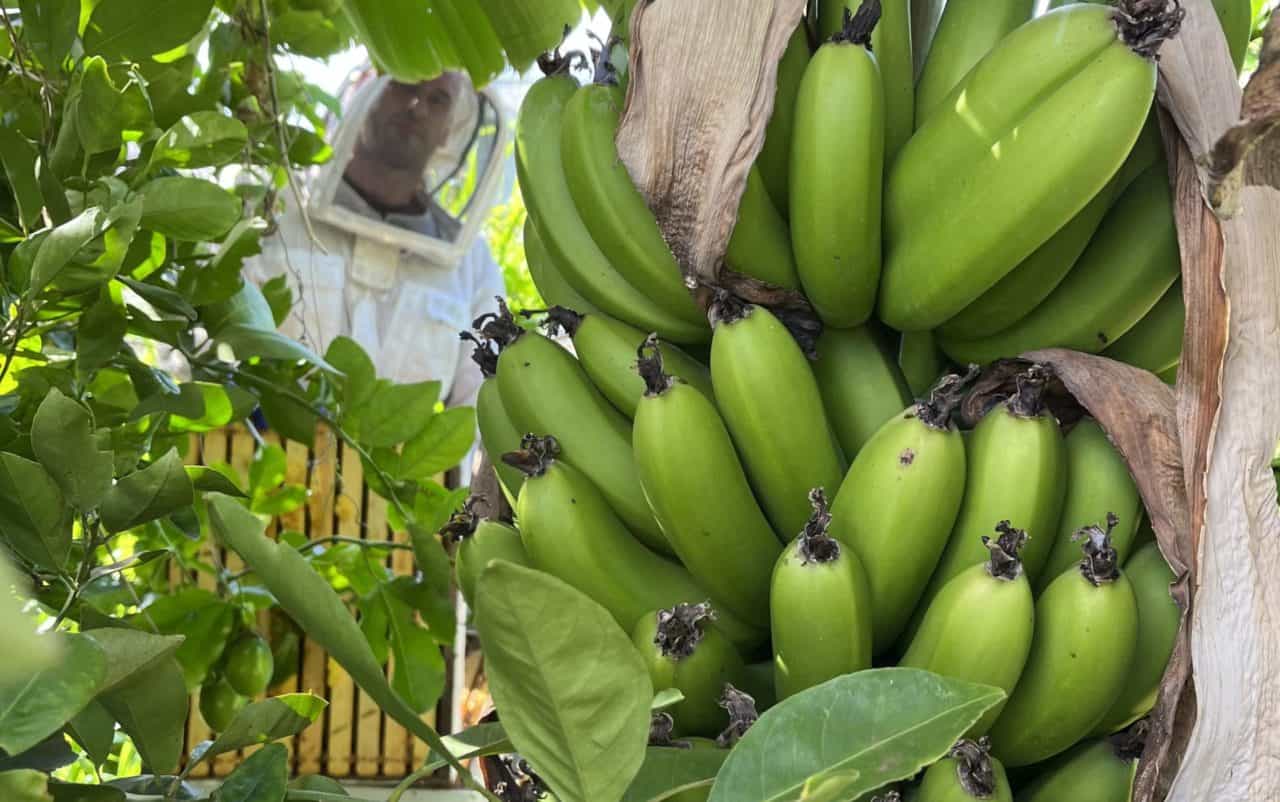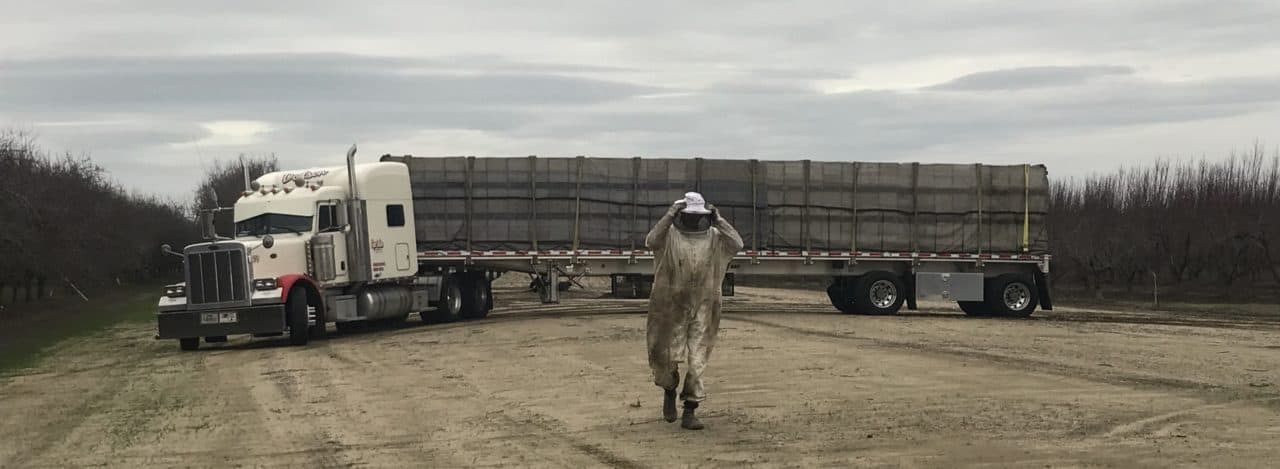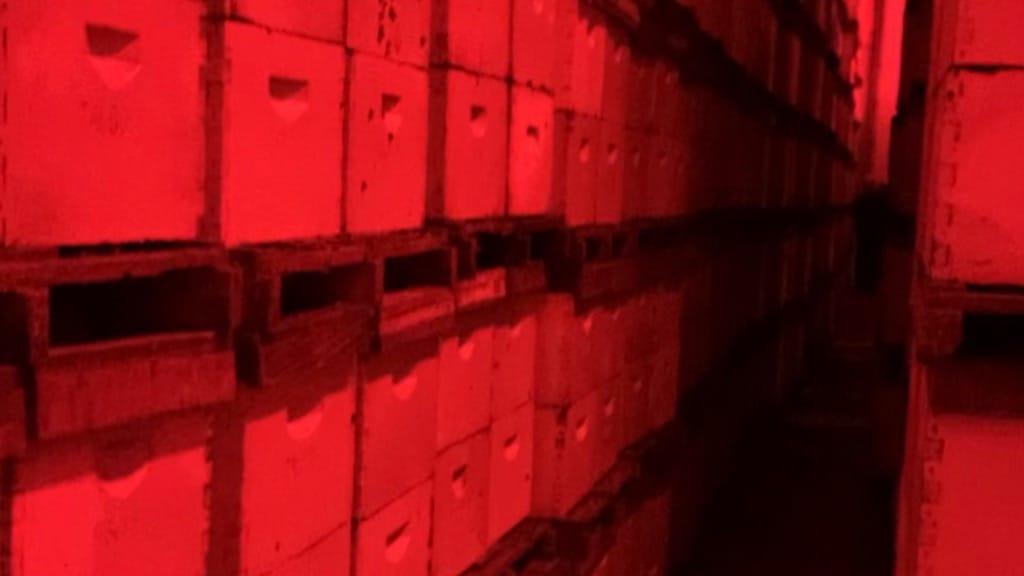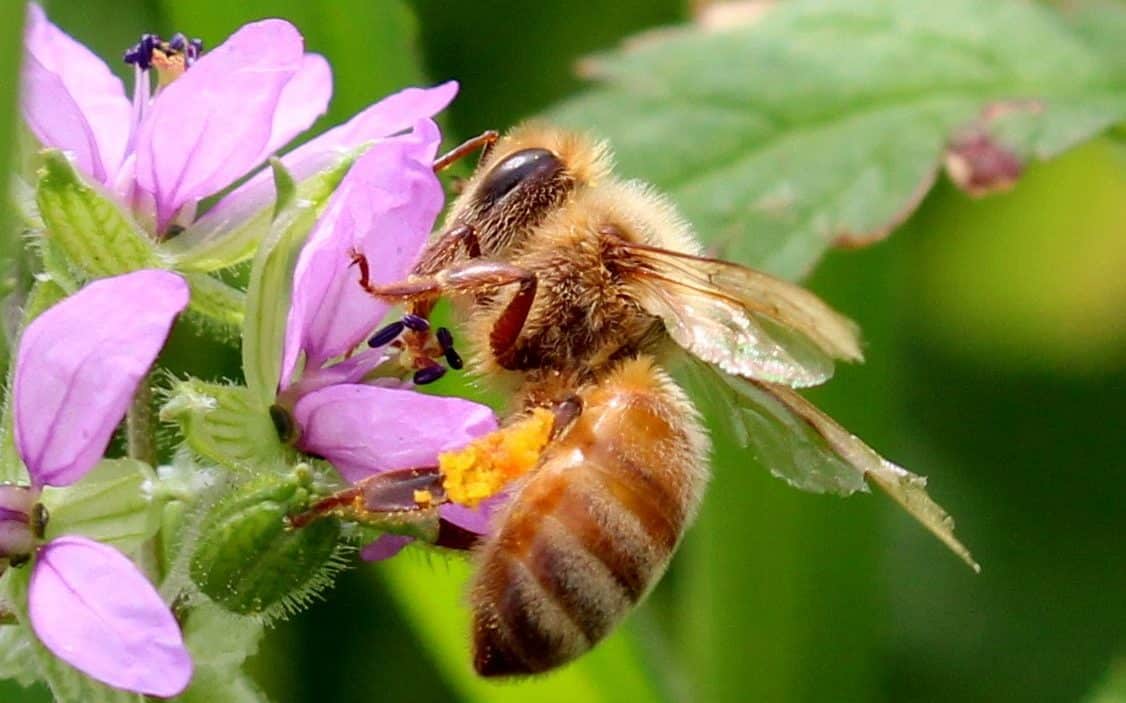Note: This is a preliminary analysis. Sample sizes and estimates are likely to change. A more detailed final report is being prepared for publication in a peer-reviewed journal at a later date. Download .pdf version here Dan Aurell1, Selina Bruckner1, Mikayla Wilson2, 3, Nathalie Steinhauer2, 3, *, Geoffrey Williams1, * 1Department of Entomology & Plant Pathology, Auburn University, Auburn, AL, USA 2Department of Entomology, University of Maryland, College Park, MD, USA 3Bee Informed Partnership, College Park, MD, USA *Joint last authors Corresponding Authors: nsteinha@umd.edu (NS) & williams@auburn.edu (GW) The Bee Informed Partnership (http://beeinformed.org) is a non-profit organization that works alongside beekeepers to improve honey bee…
Category: Around the Country
How To Cure Bee Fever
Sometimes I get bee fever from overexposure to bees. Symptoms include back aches, honey bees scurrying across the comb hidden behind my eyelids (only detectable when closed at night and sleep is attempted) and an ever-present buzzing where the sound of silence once resided. As BIP’s North Central Tech Transfer Team Field Specialist, I spend what seems like eons behind the wheel of my Chevy truck, commuting from one bee yard to the next. Three times a year I venture out on a three-week pilgrimage from my home base in the Bee Lab at the University of Minnesota, Saint Paul MN, to North Dakota to…
Join The 2022 Mite-A-Thon!
Varroa destructor (Varroa), and the viruses it vectors is a significant driver of honey bee colony mortality. Yet, indicators suggest that many beekeepers are not monitoring honey bee colony Varroa infestations and therefore aren’t able to connect infestation to colony loss. Varroa are ectoparasites that breed in the cells of developing honey bees, feeding on bees and transmitting several harmful viruses as they do so. Though it is encouraging to see awareness of these formidable foes growing on all sides of the beekeeping community, it is worrying that recent research results show signs of increasing acaricide resistance in Varroa, and rising virulence of Varroa-vectored viruses.…
Working Honey Bees in Hawai’i
Working bees in November in Hawai’i? YES, PLEASE! BIP Tech Team Field Specialist Ben Sallmann and I pounced on the opportunity to leave Minnesota and Michigan's dreary November weather. We tackled all of the logistical challenges and hopped on a plane to Hawai'i to conduct fieldwork for the state's contribution to the National Honey Bee Disease Survey (NHBS) . National Honey Bee Disease Survey The National Honey Bee Disease Survey (NHBS) is a federally-funded, nationwide, annual honey bee survey. This survey has been conducted since 2010 and is a joint effort between the U.S. Department of Agriculture’s Animal and Plant Health Inspection Service (APHIS) and…
Moving Bees Into Almonds
Every year, beekeepers from across the continental United States move millions of honey bee colonies to California’s Central Valley, arriving just in time to tend the billions of bursting almond blossoms that require their pollination services. But have you ever really thought about what it takes to accomplish this massive migration? Colonies from every corner of the country - many hunkered down in the dead of winter, or stacked in indoor, cold storage sheds - are prepped and loaded onto semis, hauled hundreds of miles, inspected at border stations, unloaded into temporary holding yards, and then relocated once more - strategically placed amongst the almonds…
Spending More Time Indoors Is What’s In Store For U.S. Honey Bee Colonies
In the dim, red glow of the immense warehouse’s lights, tall stacks of wooden boxes are lined up in seemingly endless rows, where they will stand for the next couple of months until spring returns to California. But this is not just a warehouse full of surplus beekeeping equipment, it is an indoor storage facility – and the boxes aren’t empty, but filled with live, honey bee colonies, waiting out the winter weather in this chilly, climate-controlled facility. Storing bees indoors over the winter months is not new in North America; for many years, some beekeepers in Canada and the northern US have kept colonies…
A Bee on the Wall: Transporting Honey Bee Colonies to California for Almond Pollination
Written by Grace Kunkel and Sharah Yaddaw, Project Apis m. team members Taking honey bees out of indoor storage (or an over-wintering apiary) and transporting them to California in time for almond pollination is a massive, coordinated effort that commercial beekeepers undertake every year. It isn’t just the beekeepers that make it happen; experienced truck drivers, state inspectors staffing points of entry into California, and almond growers all coordinate for this event. Most importantly, mother nature determines the exact timing of the almond bloom and the driving conditions the truck drivers must navigate to get there. Project Apis m.’s Director of Communications, Sharah Yaddaw, along…
Latest Spring Fashion – Blue Pollen
Photo: Dan Wyns
Early spring can be a time requiring patience for beekeepers in northern locations. The weather can be volatile, but the occasional sunny days bring about bee activity. As a beekeeper it can be tempting to open hives and start digging around once you see some flight activity, but the reality is that you may end up doing more harm than good at this stage. Sometimes the best thing you can do as a beekeeper is leave them alone. If you really must do something bee related on a sunny spring day, try just observing the entrance and see what your bees are gathering. On a…
Honey Mustard or Mustard Honey?
Honey bees need an abundance and diversity of floral resources to grow and thrive throughout the season. In areas of intensive agriculture, like the almond orchards of California, forage can be scarce before and after the primary cultivated crop blooms. One of the pollinator friendly plants that is often seen in and around orchards and agricultural fields is mustard. The common appearance is due to both deliberate planting as a cover crop and the plant spreading through self-sowing. There is a great deal of research going into developing cover crop seed mixes to supplement forage before and after almond bloom. Many of these seed mixes…
A Look At Filaree As A Forager Food
The vast majority of the commercially managed honey bee colonies in the United States spend February and a portion of March pollinating almonds in the central valley of California. Almond pollen is very nutritious, and colonies build well on it when favorable weather conditions prevail during bloom. The weather during almond pollination season in 2020 was very favorable, and colonies made significant increases in both population and food reserves during the bloom period. While warm and dry conditions this year led to a good nut set, it did mean that bloom progressed quickly, and once finished there were limited flowers available. By working in various…
